Montessori is one of the fastest growing educational approaches in the world and an estimated 20,000 schools across the world currently teach in the Montessori style. This article explores some of the unique characteristics of the Montessori approach and looks at how it operates in the early childhood setting.
On 6 January 1907 Dr Maria Montessori, the first Italian woman to become a physician, opened the original Montessori School in San Lorenzo, Italy.
Dr Montessori based her educational methods on scientific observation of children’s learning processes. Guided by her discovery that children teach themselves, Dr Montessori designed a “prepared environment” in which children could freely choose from a number of developmentally appropriate activities.
Now more than a hundred years later the Montessori approach is a well established and very popular option in Australia’s education landscape for both early childhood teachers and parents. Please note that while the Montessori method is taught right through to high school this article focuses on early years education, specifically ages zero-six years.
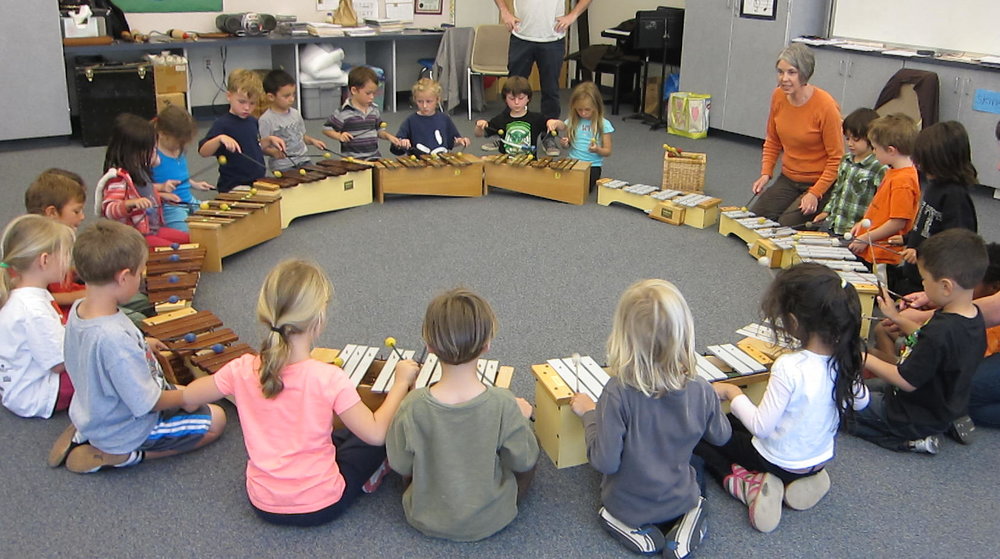
The Montessori Method:
The Three-hour Work Period
In the three to six year old class there is one or two three-hour, uninterrupted, work period each day. In this time children have three hours to choose and carry out their own work and are not required to participate in any outside play, group story time, circle time, music, or any other activities which take time away from their own choice of activity.
During this time adults and children are asked to respect each other’s concentration by not interrupting each other. Traditional group activities spontaneously arise according to the interest of a child or a group of children or are suggested by the teacher if necessary.
Multi-age grouping
Children are grouped in mixed ages and abilities in three to six year spans: zero to three and three to six. Montessori teachers believe this encourages constant interaction, problem solving, child-to-child teaching, and socialisation.
Work centers
The physical environment is arranged according to subject area, and children are free to move around the room. There is no limit to how long a child can work on any one project or activity.
Children are encouraged to develop independence and the environment has been designed to facilitate this through: Construction in proportion to the child and his/her needs, beauty, harmony and cleanliness of the environment, order, a floor plan that promotes movement and activity and limitation of materials, so that only resources that support the child’s development are included.
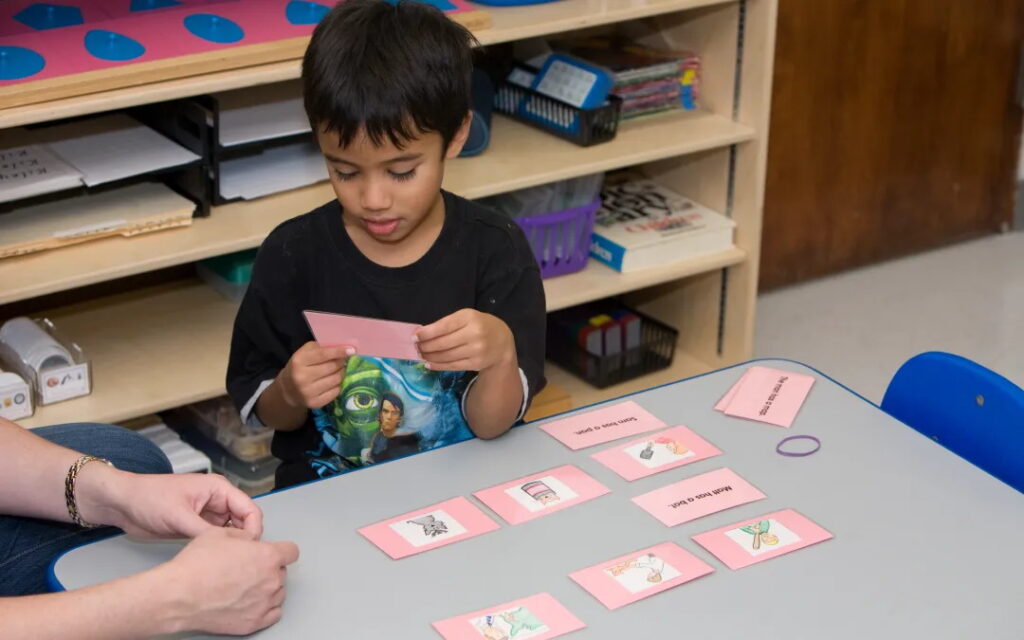
Teaching method
The Montessori method encourages educators to: “Teach by teaching, not by correcting” and children’s effort and work is respected as it is. Through observation and record-keeping, teachers plan individual projects to enable each child to learn what he/she needs in order to improve.
Teaching ratio
This is guided by national standards for the zero to six age group, however teachers are trained to guide a child’s research and exploration and capitalise on his/her interest and excitement about a subject. Teachers do not set assignments or dictate what to study or read, nor do they set a limit as to how far a child follows an interest.
Basic lessons
Montessori teachers spend time practicing lessons and must pass a written and oral exam on these lessons in order to be certified. Teachers are trained to recognise a child’s readiness according to age, ability, and interest in a specific lesson and are able to guide individual progress.
Areas of study
All subjects are interwoven and children are encouraged to have broad interests. A child can work on any material he/she understands at any time.
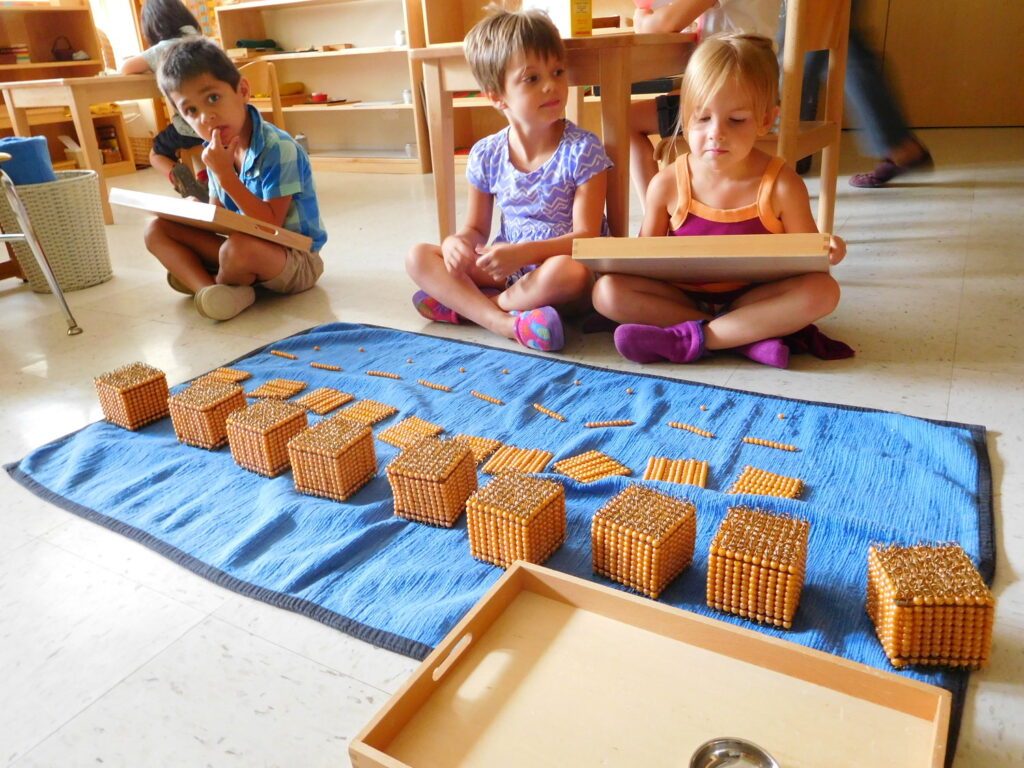
Learning styles
All kinds of intelligences and styles of learning are encouraged including: musical, bodily-kinesthetic, spatial, interpersonal, intrapersonal, intuitive, and the traditional linguistic and logical-mathematical (reading, writing, and math).
Assessment
There are no academic requirements for children aged zero to six, but according to the Montessori.edu website ‘children are exposed to amazing amounts of knowledge and often learn to read, write and calculate beyond what is usually thought interesting to a child of this age.’
Character education:
Education of character is considered equally with academic education and Montessori encourages children to learn how to take care of themselves, their environment, each other – cooking, cleaning, building, gardening, moving gracefully, speaking politely, being considerate and helpful, doing social work in the community, etc.
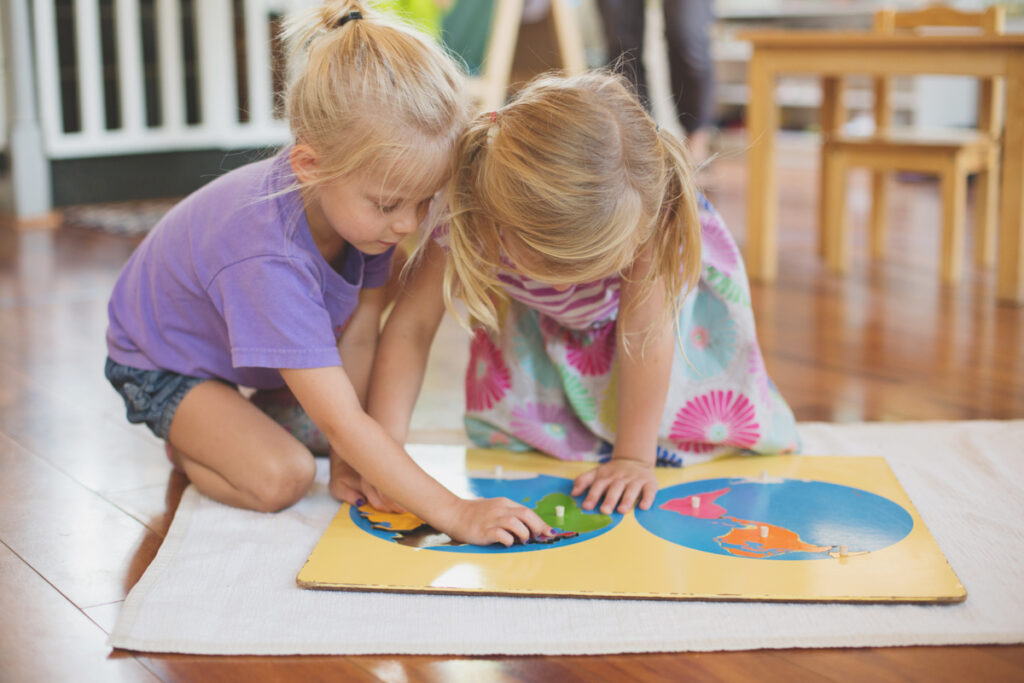
Montessori and Learning
Infants
Supporters of the Montessori approach maintain that the first three years of life are the most fundamental in the development of human beings and their potential.
With this in mind Montessori offers a range of learning environments: For working parents a Nido is for babies from two to three months until they are walking well. The Parent-Infant class enables parents and kids (aged two to 16 months) to get together with a Montessori educator and other young children to develop motor coordination, independence and language. Once kids are walking well they move into the toddler group.
Preschoolers
Maria Montessori observed that from birth to age six children have what she described as an ‘absorbent’ mind enabling them to learn how to speak, move and internalise order. She also observed periods of special sensitivity in children when they are attracted to certain stimuli in the environment enabling them to acquire specific skills and knowledge. Proponents of Montessori claim these periods occur universally for all kids at roughly the same age and providing them with the right environment and resources to practice these skills leads to optimal development.
With this in mind Montessori has four main areas in its pre-school program: Practical Life, Sensorial, Language and Mathematics. Some emphasis is also placed on Creative Arts, Music, Science, Geography and Cultural Studies.
The Practical Life component of the Montessori approach is the link between a child’s home environment and the classroom. The practical life materials involve the children in precise movements which challenge them to concentrate, to work at their own pace uninterrupted, and to complete a cycle of work. Practical life encompasses four main areas: Control of Movement, Care of Person, Care of Environment and Grace and Courtesy.
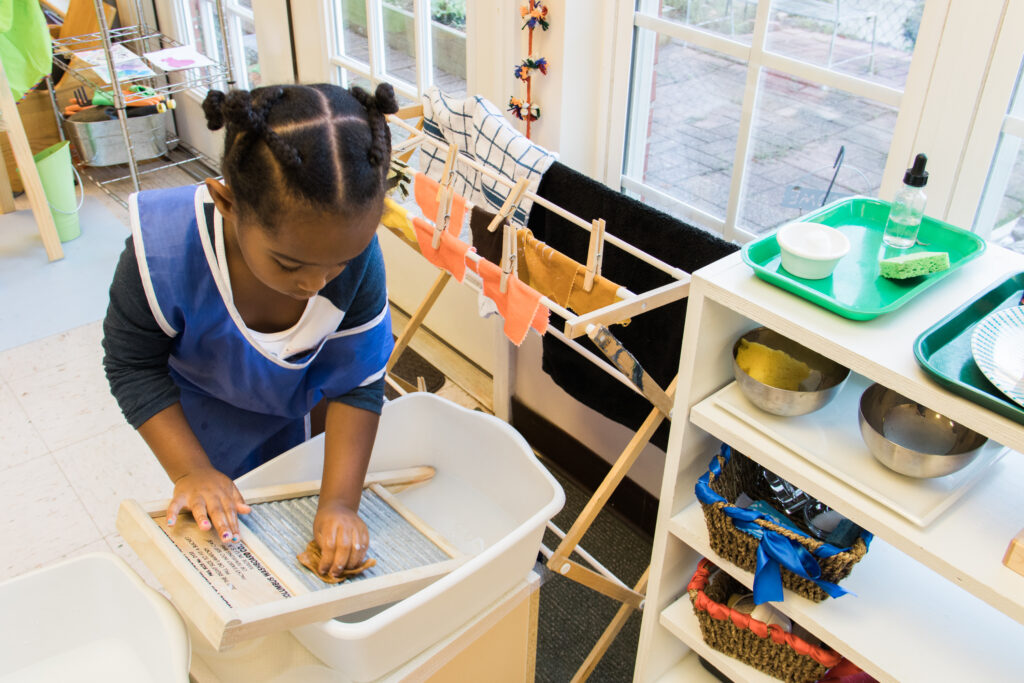
Sensorial
The sensorial materials give a child experience in perceiving distinctions between similar and different things. Children then learn to grade a set of similar objects that differ in a regular and measurable way from most to least. Each piece of equipment is generally a set of objects which isolates a quality experienced through the senses such as color, form, dimension, texture, temperature, volume, pitch, weight and taste. Precise language such as loud/soft, long/short, rough/smooth, circle, square, cube is used to describe these experiences to make the world meaningful to the child.
Language
Oral language acquired since birth is refined through a variety of activities such as songs, games, poems, stories and classified language cards. Preparation for writing begins with the practical life exercises and sensorial training. Muscular movement and fine motor skills are developed along with the ability of the child to distinguish the sounds which make up language. Children hear and see sounds but they can feel them by tracing sandpaper letters. When a number of letters have been learned the movable alphabet is introduced. These cardboard or wooden letters enable the child to reproduce his or her own words, then phrases, sentences and finally stories.
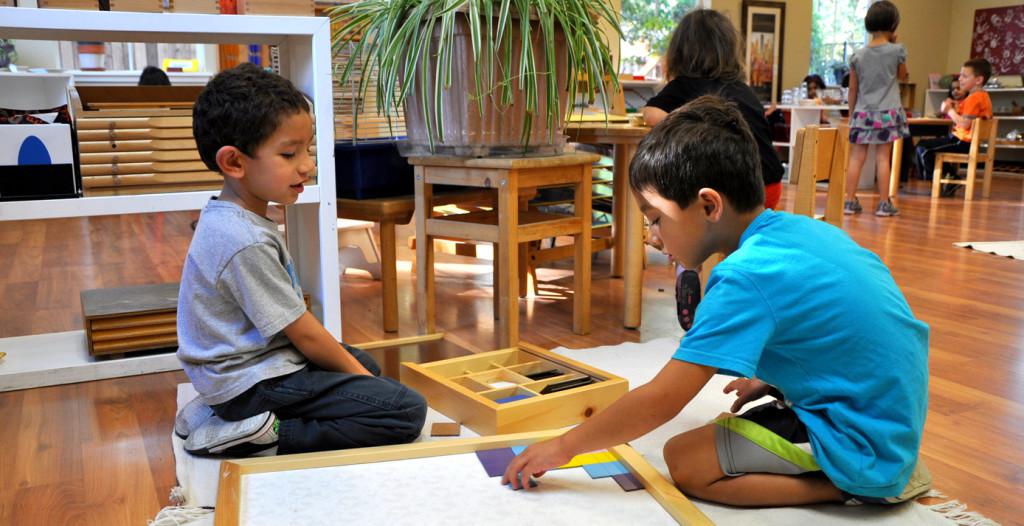
Mathematics
Montessori advocates believe a child’s mind is awakened to mathematical ideas through the sensorial experiences described above. Once children can see the distinctions of distance, dimension, graduation, identity, similarity and sequence they will be introduced to the functions and operations of numbers. Resources and materials available in the schools support the development of these skills.

